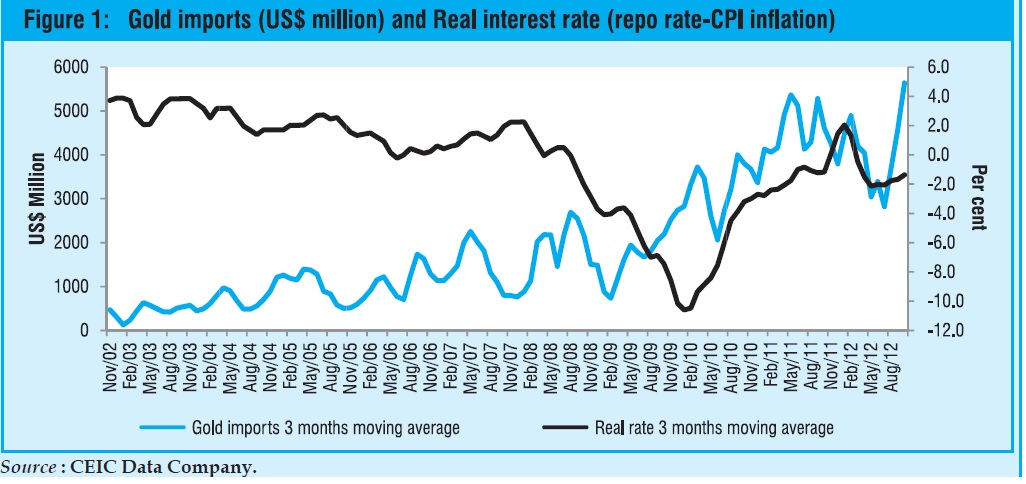
Buried somewhere in the last financial year’s Economic Survey are some very disturbing data points, which the pink papers do not like to talk about. The usual news reports that you will read in the business newspapers published in the country are about professional colleges (MBA/Engineering) being flush with jobs.
None of the newspapers get into detail about how bad the overall job scenario in India is. The fact of the matter is that we just aren’t creating enough jobs for the youth who are entering the workforce every year.
The Economic Survey points out that between 1999-2000 and 2004-2005 the employment as measured by the usual status method increased from 398 million to 457.9 million. This was the period when the Bhartiya Janata Party led National Democratic Alliance was in power.
After this, the job growth just came to a complete standstill. Between 2004-2005 to 2009-2010, the employment increased by just 1.1 million to 459 million. The first term of the Congress led United Progressive Alliance was a period of jobless growth, despite the gross domestic product(GDP) registering solid growth. So, the size of the overall economy was growing but the jobs weren’t.
The situation improved over the next two years. Between 2009-2010 and 2011-2012, the number of employed individuals increased by 13.9 million to 472.9 million. Hence, the employment growth between 2004-2005 and 2011-2012 was at a minuscule 0.5% per year. In comparison, the employment growth was at 2.8% per year between 1999-2000 and 2004-2005.
Mihir S Sharma in Restart—The Last Chance for the Indian Economy looks at the data over a longer time frame and comes up with a similar conclusion: “In the years from 1972 to 1983—not celebrated as a time of overwhelming prosperity—the total number of jobs in the economy nevertheless grew by 2.3 percent a year. In the years between liberalization in 1991 and today, jobs have grown at an average of 1.6 percent a year.”
The trouble is that this is not enough. “13 million Indians will join the workforce every year from now on till 2030…But, if these young people have to absorbed, then jobs must grow at least 3 per cent a year—almost twice the rate at which they have since liberalization. This is simply not happening. In other words, one out of every two youngsters who starts looking for a job next year won’t find one,” writes Sharma.
What makes the scenario worse is that as per the last census nearly 47 million Indians under the age of 25 have been looking for a job, and not been able to find one.
So what is the way out? The Economic Survey provides what looks like an answer. As it points out: “The defining challenge in India today is that of generating employment and growth. Jobs are created by firms when firms invest and grow. Hence it is important to create an environment that is conducive for firms to invest…The ultimate goal of economic policy is to create a sustained renaissance of high growth in which hundreds of millions of good quality jobs are created. Good quality jobs are created by high productivity firms, so this agenda is critically about how firms are created, how firms grow, and how firms achieve high productivity.”
Theoretically the above paragraph makes perfect sense. But there are several problems with it. India grew at the rate of 7.4% per year between 2004-2005 and 2011-2012. Despite this the job growth came to a standstill. Between 1999-2000 and 2004-2005 the economic growth was around 6% per year. Nevertheless, jobs grew at a much faster rate than they grew between 2004-2005 and 2011-2012.
So, faster economic growth does not always create jobs. Further, the Economic Survey talks about highly productive firms creating quality jobs. The question is what portion of Indian firms are highly productive or want to achieve high productivity. A significant portion of big Indian firms are essentially run by crony capitalists who are more interested in short term gains rather than building a highly productive organization.
Then there is the question of labour laws as well. Sharma provides a comparison between Bangladesh and India, and how the countries stack up when it comes to their respective textile industries. As he writes: “Before the expansion of trade thanks to new international rules in the twenty-first century, India made $10 billion from textile exports, and Bangladesh $8 billion. Today India makes $12 billion—and Bangladesh $21 billion.”
So what happened here? The textile industry, explains Sharma, needs to turnaround big orders quickly and efficiently. “Really long assembly lines still matter in textiles: in some cases, 100 people can sequentially work to make a pair of trousers in least time. In Bangladesh, the average number of people in a factory is between 300 and 400; in the South Indian textiles hub of Tirupur, it’s around 50,” writes Sharma.
Why is there such a huge differential is a question worth asking? The answer lies in the surfeit of labour laws that firms in this country need to follow. And this ensures that most Indian textile firms start small and continue to remain small.
In their book India’s Tryst with Destiny, Jagdish Bhagwati and Arvind Panagariya point out that 92.4% of the workers in this sector work with small firms which have forty-nine or less workers. Now compare this to China where large and medium firms make up around 87.7% of the employment in the apparel sector.
In fact, the Indian Constitution allows both the central as well as state governments to pass labour laws. This has led to a surfeit of labour laws. As Bhagwati and Panagariya point out: “The ministry of labour lists as many as fifty-two independent Central government Acts in the area of labour. According to Amit Mitra (the finance minister of West Bengal and a former business lobbyist), there exist another 150 state-level laws in India. This count places the total number of labour laws in India at approximately 200.”
What leads to further trouble is that these laws are not consistent with one another. This has led to a situation where “you cannot implement Indian labour laws 100 per cent without violating 20 per cent of them,” write Bhagwati and Panagariya.
This explains why Indian textile firms continue to remain small and not enough jobs are created in the process. As Bhagwati and Panagariya write “As the firm size rises from six regular workers towards 100, at no point between these two thresholds is the saving in manufacturing costs sufficiently large to pay for the extra cost of satisfying the laws”.
In fact, the textile sector is an excellent representation of the overall Indian business. Businesses which have less than 10 workers, employ more than 90% of India’s workers. What this clearly tells us is that the government of India needs to start simplifying its labour laws. At the same time this needs to trickle down to the level of state governments as well.
Sharma summarizes it best when he says: “[India] tried to protect workers instead of work; and it failed.” And that needs to change.
The column appeared on www.equitymaster.com as a part of The Daily Reckoning on Feb 13, 2015



